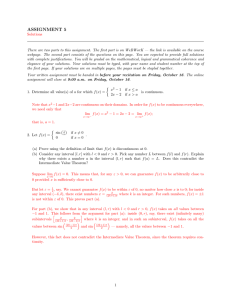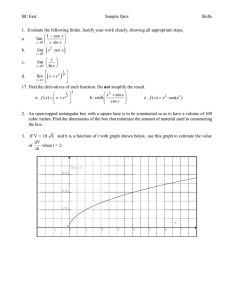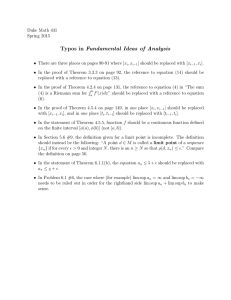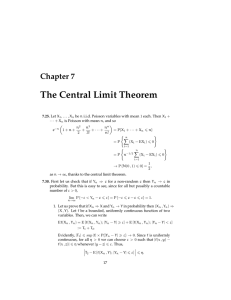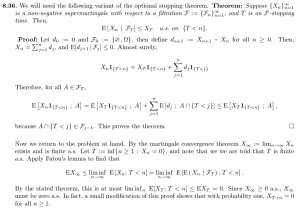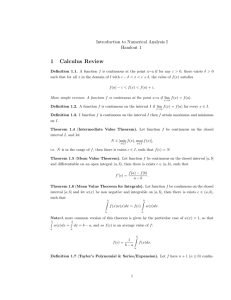Vantage Math 100/V1C,V1F Intermediate value theorem (IVT)
advertisement
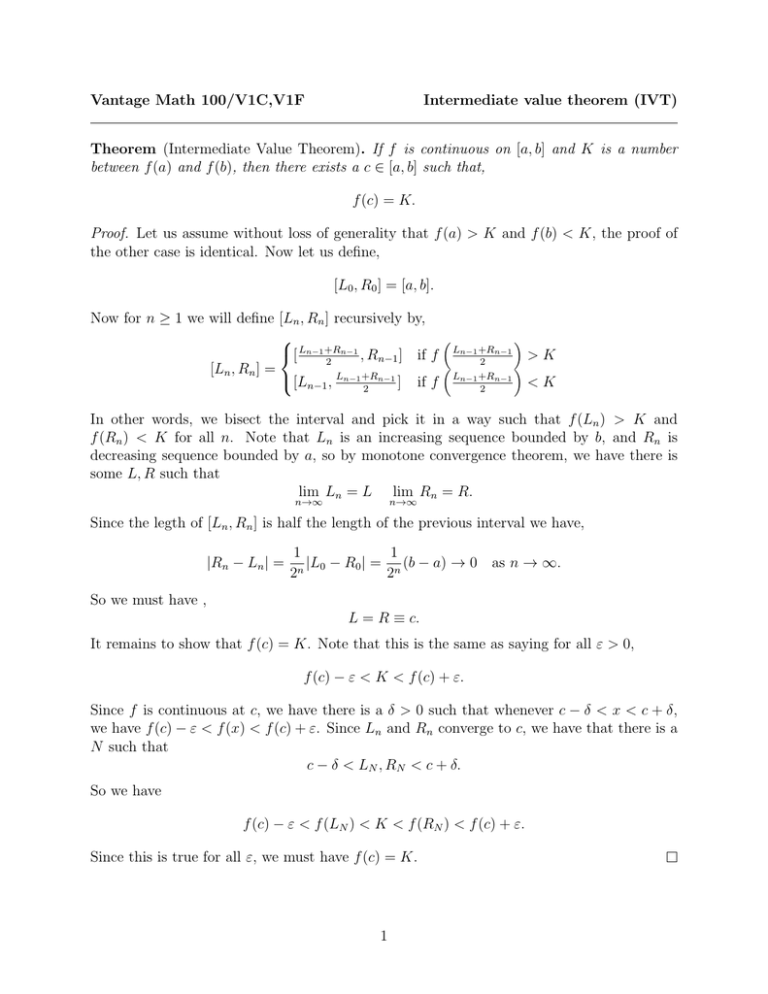
Vantage Math 100/V1C,V1F Intermediate value theorem (IVT) Theorem (Intermediate Value Theorem). If f is continuous on [a, b] and K is a number between f (a) and f (b), then there exists a c ∈ [a, b] such that, f (c) = K. Proof. Let us assume without loss of generality that f (a) > K and f (b) < K, the proof of the other case is identical. Now let us define, [L0 , R0 ] = [a, b]. Now for n ≥ 1 we will define [Ln , Rn ] recursively by, [ Ln−1 +Rn−1 , Rn−1 ] if f Ln−1 +Rn−1 > K 2 2 [Ln , Rn ] = L +R L +R n−1 n−1 n−1 n−1 [Ln−1 , <K ] if f 2 2 In other words, we bisect the interval and pick it in a way such that f (Ln ) > K and f (Rn ) < K for all n. Note that Ln is an increasing sequence bounded by b, and Rn is decreasing sequence bounded by a, so by monotone convergence theorem, we have there is some L, R such that lim Ln = L lim Rn = R. n→∞ n→∞ Since the legth of [Ln , Rn ] is half the length of the previous interval we have, |Rn − Ln | = 1 1 |L0 − R0 | = n (b − a) → 0 as n → ∞. n 2 2 So we must have , L = R ≡ c. It remains to show that f (c) = K. Note that this is the same as saying for all ε > 0, f (c) − ε < K < f (c) + ε. Since f is continuous at c, we have there is a δ > 0 such that whenever c − δ < x < c + δ, we have f (c) − ε < f (x) < f (c) + ε. Since Ln and Rn converge to c, we have that there is a N such that c − δ < LN , RN < c + δ. So we have f (c) − ε < f (LN ) < K < f (RN ) < f (c) + ε. Since this is true for all ε, we must have f (c) = K. 1






